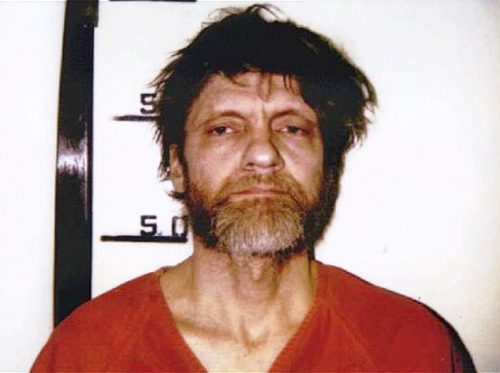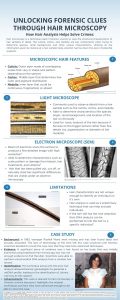Theodore “Ted” Kaczynski, nicknamed the “Unabomber,” killed and injured several people from 1978 to 1995 using mail bombs. Many experts on terrorism have difficulty in establishing whether to consider Ted a terrorist. Some believe he is simply a murderer, while others say that because of his political agenda and his decision to go after certain kinds of people, like science professors and big businessmen, that he should indeed be classified as a terrorist.1
Years before his bombing spree, in 1958, Kaczynski had been a student at Harvard University. The most astounding part is that he was only sixteen years old when he attended his first year as a freshman in college. As a child, Ted had been deemed a gifted student by his teachers. He reportedly had an IQ of 157 at the age of ten. He was allowed to skip sixth grade and work with older students, but he did not like that at all. In his journal, Ted described working with older students as considerably difficult, and he was regularly taunted by them. He never seemed to fit in. During high school, his struggle to be social continued, and he felt isolated from the rest of the students. Despite all of these problems, he still excelled academically and was allowed to skip the eleventh grade. He did have a moment of social fame which came when he made a pipe bomb in one of his science classes, but that moment of fame soon died away and he was alone again.2
During his time at Harvard, Ted continued to have extreme success academically, but still failed to be a part of the college’s social life. He lived in a single room, and some of his classmates recalled the room as messy, and that Kaczynski hardly had any interaction with any of his peers. At Harvard, he joined a study to determine the effects of extreme stress on the human psyche. The study had participants undergo extreme interrogations and personal belittlement over their beliefs and ideals. These interrogations upset Kaczynski, and he began to feel a disdain towards society and authority. According to Alston Chase, a Kaczynski researcher, Ted began to develop a theory to explain his anger and unhappiness. Chase said that, in Ted’s eyes, science and technology were destroying liberty and nature. The “system,” which included Harvard, sought to transform men into automatons to serve the machine by using techniques of behavior modification like propaganda and advertising. Unknowingly, during his undergraduate career, Ted was well on his way to becoming the Unabomber. He completed his undergraduate degree in mathematics in 1962, and went on to graduate school at the University of Michigan. He earned his master’s and Ph.D. in mathematics, and professors often described him as ambitious and talented.3
At that time, the University of California at Berkeley was considered the center of the counterculture movement, and that is where Ted decided to begin his career as a professor. He was uninterested in political activism, and failed, yet again, to become involved with those around him. He didn’t really have the talent to be a teacher and was very unpopular with students. So in January of 1969, he decided to resign his position at the end of the term. He also intended to give up mathematics altogether. His professional and social life began to spiral down after the decisions he had made.4

After his resignation, Kaczynski returned to Illinois, which was where he was born, and lived in a house owned by his parents. He was unemployed, and worked random jobs to get money, as well as borrowing money from his parents. Kaczynski was living as a hermit in the 1970s, and had little interaction with people as he began to sink deeper into his social isolation and anger. He directed all of that anger towards technology and its advancements in society. He began to write about the evils that came with technology and its control over individuals.5 During his time as a hermit, Ted decided to move to Montana where his brother lived. They split the cost of an open piece of land near Lincoln, Montana, and he began to construct a rudimentary cabin that measured 10 by 12 feet and lacked running water, electricity, and heat. Some of his neighbors described him as a quiet man who rode his homemade bicycle and spent a lot of time at the library. He enjoyed reading, and he acquired a substantial collection of volumes that filled his little home. As the decade progressed, he became more and more isolated from society. He returned to Illinois in 1978 and worked at a foam rubber factory where his brother was a supervisor. He was fired by his brother just a few weeks later, after posting insulting limericks around the factory because he had been rejected by a female plant manager. Many believe that this event was the tipping point that began his bombing campaign.6
Ted Kaczynski’s lengthy bombing campaign began on May 25, 1978, when he sent out his first bomb to Northwestern University. The box containing the bomb had a return address with the name of Professor Buckley Crist. The professor was suspicious of receiving a package that she never sent out and asked a campus officer to open it. The bomb detonated and caused the officer minor injuries. Ted then continued his campaign by attempting to bomb an airplane in November of 1979. The bomb detonated in the cargo hold and forced the place to land immediately. This attack sparked the start of a major investigation codenamed “Unabom” because of the university-based targets and the attack on a United Airlines executive.7

Throughout the span of seventeen years, the Unabomber seriously injured more than twenty-two people and killed three. One of the most notable deadly bombings was that of Gilbert Murray, a California timber-industry lobbyist. The package arrived on Monday, April 20. The first person to come in contact with the shoebox-size package was the receptionist who had trouble opening the package and carried it to her boss’ desk. At this point in Kaczynski’s bombing campaign, he had developed much more powerful and deadlier bombs that his previous ones. As Murray started to unwrap the package, it blew up in his hands. The blast killed Murray, forty-seven years old, and was so powerful it knocked two doors off their hinges and blew gashes into the ceiling panels. It was also loud enough that people heard it for blocks around. This startled and scared many people because the Oklahoma City bombing had occurred only five days earlier.8 It turns out that the bomb was never intended to kill Gilbert Murray but instead his predecessor, William Dennison. Dennison was the chief lobbyist for the forest-products trade group from 1980 to 1994 and a highly visible figure in a number of environmental issues. He was replaced by Murray who was killed by a package addressed to Dennison. At that time, William Dennison was seen as the No. 1 person in the timber industry because he was a prominent voice in the Pacific Northwest during the “the timber wars,” which involved environmentalists going up against ranchers, loggers, and the timber industry. Dennison was a key figure in the timber industry and many, including Ted, saw him as a threat to the environment, which could have been a reason why the Unabomber chose him, specifically.9

Around the time of the attack that killed Gilbert Murray, the Unabomber sent a letter to different newspapers, including the New York Times, that offered to stop his bombing spree if they published a manuscript titled “Industrial Society and Its Future,” which would later be known as the “Unabomber Manifesto.” If they did not comply, he threatened that the Freedom Club—”FC” was engraved on all his bombs—would ramp up their terrorist campaign. The manifesto ended up getting published by the Washington Post with help from Time Magazine on September 19, 1995. David Kaczynski, Ted’s brother, read the manifesto and recognized his brother’s writing style from reading unfinished copies that Ted had in his cabin. David contacted the authorities and Ted Kaczynski was arrested in April of 1996 in Montana. In his cabin, they found more than enough evidence, which included bomb-making supplies and early versions of the manifesto, to prove Kaczynski guilty. Two months later, he was charged with several criminal counts relating to the production and distribution of mail bombs. He resisted his lawyers’ efforts of declaring him insane and ended up not being able to represent himself in court. He agreed to a plea deal in 1998 to avoid going to trial. He pled guilty and was sentenced to life in prison without parole, and is still currently serving his sentence.10
- The Greenhaven Encyclopedia of Terrorism, 2007, s.v. “Unabomber, the (1942),” by Patricia D. Netzley. ↵
- Salem Press Encyclopedia of Science, 2013, s.v. “Unabomber case,” by Brion Sever. ↵
- Encyclopedia of World Biography, 2013, s.v. “Ted Kaczynski.” ↵
- Encyclopedia of World Biography, 2013, s.v. “Ted Kaczynski.” ↵
- Salem Press Encyclopedia of Science, 2013, s.v. “Unabomber case,” by Brion Sever. ↵
- Encyclopedia of World Biography, 2013, s.v. “Ted Kaczynski.” ↵
- Salem Press Encyclopedia of Science, 2014, s.v. “Unabomber” by Steve Hewitt. ↵
- Michael Lemonick and Jordan Bontante, “The bomb is in the mail,” Time, May 8, 1995, http://content.time.com/time/magazine/article/0,9171,982900,00.html. ↵
- Kenneth B. Noble, “Bombing in Sacramento: The Investigation; Bomb Meant for Predecessor Of Victim, Officials Say,” The New York Times, April 26, 1995, https://www.nytimes.com/1995/04/26/us/bombing-sacramento-investigation-bomb-meant-for-predecessor-victim-officials-say.html. ↵
- Encyclopedia of World Biography, 2013, s.v. “Ted Kaczynski.” ↵



111 comments
Roman Olivera
this was a very scary time in American history…The Unibomber! I am so glad that his brother turned in information on him and allowed the FBI to capture this crazy man. He sent chills down the spine of anyone of importance that was opening a package. He was an intelligent guy who had crazy motivations. Great article.
Lorenzo Rivera
First of all, congratulations on being nominated for an award this semester. This article was both very well written, and extremely informative. You did a fantastic job of captivating the reader and clearly explaining the topic at hand, and it is clear that your research on the unabomber truly aided your development of this article. It was a really great read, and very enjoyable overall. Good luck!
Cooper Dubrule
The way this article went into his life story really helped to understand how Ted was a product of what he went through which ultimately made him the mass murderer that he was. At the time, it was extremely difficult to stop such a threat as this. In the end he killed over twenty people in his seventeen year span of bombing.
Valeria Perez
I had never heard of the Unabomber before reading this article but I think it is crazy that the hunt for the Unabomber lasted seventeen years! It is also surprising that a Harvard child prodigy would be responsible for all of this. It is sad that such a talented individual would use all of his talents and knowledge for such horrible causes, imagine what he could have accomplished if he would have perused something that would benefit society!
Julissa Cantu
There are a few issues that arise within this article regarding the subject matter. Firstly, there are some statements that seem to go to great lengths to humanize Kaczynski which is problematic as it almost excuses his actions. Secondly, Aboyte seems to question whether Kaczynski is a terrorist or common criminal with his actions but then goes on to frame him as a terrorist. Aboyte should have simply labeled him as a terrorist. Otherwise, the article was formatted well and caught the audience’s attention, even if it did not really lead where the article was going.
Enrique Segovia
Congratulations Pedro Gonzalez Aboyte for your nomination in the category for Best Article in the Category of “Crime”! I am glad this article got nominated because it was one of the articles I enjoyed the most throughout the semester. Also, this article left me shocked when I learned that ever since he was a child, he was ostracized and his demeanor was really suspicious. Even though he was a genius (also new to me), he committed several atrocities that no one will forget.
Devin Ramos
I had heard about the Unabomber but never in detail to me he was a terrorist since he chose targets rather than just killing random people. Another crazy thing to me is that he was able to deliver packages for seventeen years without being caught. It is also crazy to me that his brother turned him in, I am pretty sure his brother had a feeling that Ted would have done something like this because of his weird lifestyle.
Crystal Baeza
Although Kaczynski was a criminal, it was neat reading about his background. For someone to attend Harvard he knew exactly what he was capable of doing. If he had made better decisions during his lifetime maybe his life wouldn’t have spiraled down to how bad it was. He still could have been a decent human being instead of creating bombs that would kill and hurt innocent lives. It’s always the quiet ones you have to be aware of. Congratulations on your nomination! This article deserved it.
Avery Looney
Congratulations on a nomination for an award! This article was a very interesting read and contained lots of information that I never knew about the Unabomber. I was aware of what the Unabomber had done but I was unaware of his past. It was obvious that the Unabomber had to be brilliant, but I did not expect him to have a PhD and that he attended Harvard. A lot of times the people who ed up doing the worst things are never the ones we expect. Overall this article was a great read and deserves the nomination it received!
Adam Portillo
I really enjoyed reading this article. I remember watching a documentary on Ted Kaczynski and was surprised that he attended Harvard for some time. This article does a really good job in giving details about Ted Kaczynski’s life to the reader which I felt was not known to many before reading this article. It’s definitely interesting that a series of crimes like this could still happen in the present-day.